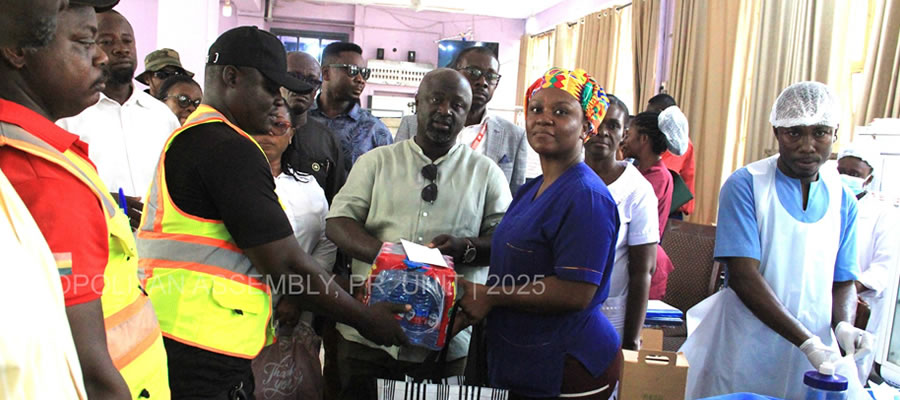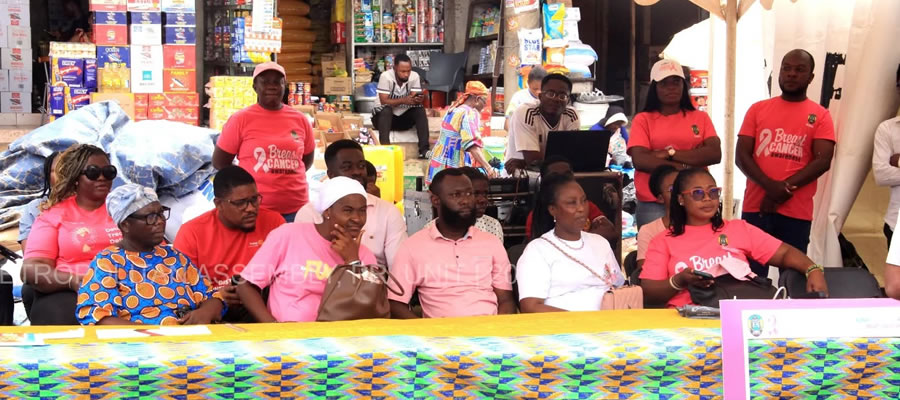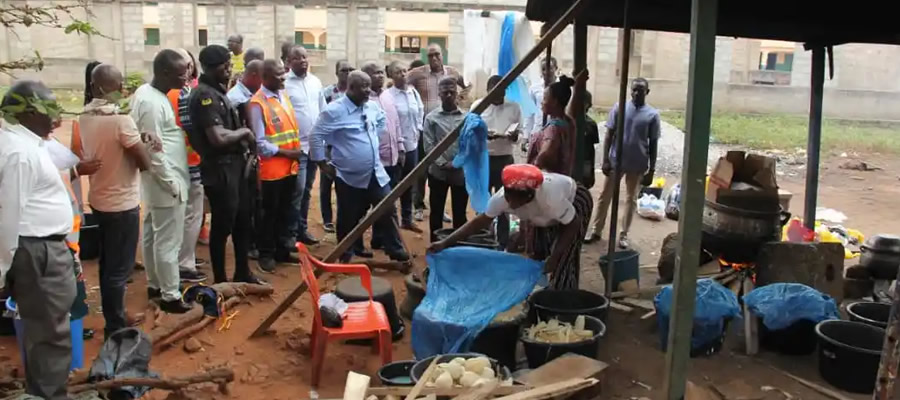

Location and Size
Kumasi is located in the transitional forest zone and is about 270km north of the national capital, Accra. It is between latitude 6.35o – 6.40o and longitude 1.30o – 1.35o, an elevation which ranges between 250 – 300 metres above sea level with an area of about 254 square kilometres. The unique centrality of the city as a traversing point from all parts of the country makes it a special place for many to migrate to.
Climate
The Metropolis falls within the wet sub-equatorial type. The average minimum temperature is about 21.5oc and a maximum average temperature of 30.70c. The average humidity is about 84.16 per cent at 0900 GMT and 60 per cent at 1500 GMT. The moderate temperature and humidity and the double maxima rainfall regime (214.3mm in June and 165.2mm in September) have a direct effect on population growth and the environment as it has precipitated the influx of people from every part of the country and beyond its frontiers to the metropolis. This is chiefly because the climatic conditions are not harsh.
Vegetation
The city falls within the moist semi-deciduous South-East Ecological Zone. Predominant species of trees found are Ceiba, Triplochlon, Celtis with Exotic Species. The rich soil has promoted agriculture in the periphery. A patch of vegetation reserve within the city has led to the development of the Kumasi Zoological Gardens, adjacent to the Ghana National Cultural Centre and opposite the Kejetia Lorry Terminal. This has served as a centre of tourist attraction. In addition to its scenic beauty as a tourist centre its other objectives include education, preservation of wildlife, leisure and amusement. Apart from the zoological gardens, there are other patches of vegetation cover scattered over the peri-urban areas of the metropolis. However, the rapid spate of urbanization has caused the depletion of most of these nature reserves.
Relief and Drainage
The Kumasi Metropolis lies within the plateau of the South–West physical region which ranges from 250-300 metres above sea level. The topography is undulating. The city is traversed by major rivers and streams, which include the Subin, Wiwi, Sisai, Owabi, Aboabo, Nsuben among others. However, biotic activity in terms of estate development, encroachment and indiscriminate waste disposal practices have impacted negatively on the drainage system and have consequently brought these water bodies to the brink of extinction.
Geology and Minerals
The Kumasi Metropolitan area is dominated by the Middle Precambrian Rock. The effect of this unique geological structure in the metropolis has both positive and negative impacts on the local economy. The very existence of the Precambrian Rock has led to the development of the construction industry in the metropolis. There are a few small-scale mining activities and the proliferation of stone Quarrying and Sand Winning Industries. Even though these have created employment opportunities, the uncontrolled extraction of these resources poses environmental hazards.
Soils and Agricultural Land Use
The major soil type of the metropolis is the Forest Ochrosol. The detailed soil associations are the following: Kumasi - Offin Compound Association; Bomso – Offin Compound Association; Nhyanao - Tinkong Association; Bomso – Suko Simple Association; Bekwai – Oda Compound Association and Bekwai – Akumadan – Oda Compound Association. It is a very rich type of soil that has made it possible for a lot of foodstuff (vegetables, plantain, cassava etc) to be grown in the periphery.
Agriculture in the metropolis has seen a dramatic change in the last two decades due to rapid urbanization. The demand for residential, industrial and commercial land uses has become much greater than that of agricultural land use. Following this, it has been estimated that about 80% of the arable lands have been displaced by the construction of houses and other physical infrastructure.
It has been estimated that the metropolis has 12,000 hectares of irrigable lands consisting of swampy and marshy areas (Metro.Agriculture Directorate). Agricultural land use in the metropolis has been consigned to crop farming in the peri-urban communities (eg. Dichemso , Takyiman, Parkoso, Apeadu, Kokoben etc) and along the banks and valleys of rivers/streams. Vegetables, both traditional and exotic, are more widely cultivated than traditional food crops. As it is the case, vegetable cultivation increases with greater urbanization of communities. The main locations for vegetable cultivation are Gyinyasi, KNUST, Manhyia, Kakaro, Georgia and Asokore Mampong.
Areas that further fall under agricultural land use include lands with cultivation of food crops like yam, cocoyam, plantain, cereals, legumes and fruits take place. Other areas are lands devoted for livestock production and marketing. The Kumasi Abattoir area witnesses brisk commercial activities in pigs, sheep, goats, cattle and other small animal markets in the metropolis. The percentage of poultry farmers seems low, but they are all more or less commercial farmers. Aquaculture is well practised in the metropolis.
There are about 165 functional fishponds in the metropolis (Metro Agriculture Directorate). This activity is in its embryonic state and has bright prospects. Currently, pork, chicken and beef are processed into standard sausages, bacon etc. Furthermore, plantain chips, cassava flour and gari are also processed in the Metropolis. Local milk is also processed into yoghurt and milk drink. A lot more people are into the storage of maize.
The raising of seedlings of the various crops (oil palm, mango citrus, coconut, chilies and flowers for sale is also practised in the metropolis)
Date Created : 11/29/2017 1:28:00 AM












 facebook
facebook
 twitter
twitter
 Youtube
Youtube
 +233 593 831 280
+233 593 831 280 0800 430 430
0800 430 430 GPS: GE-231-4383
GPS: GE-231-4383 info@ghanadistricts.com
info@ghanadistricts.com Box GP1044, Accra, Ghana
Box GP1044, Accra, Ghana